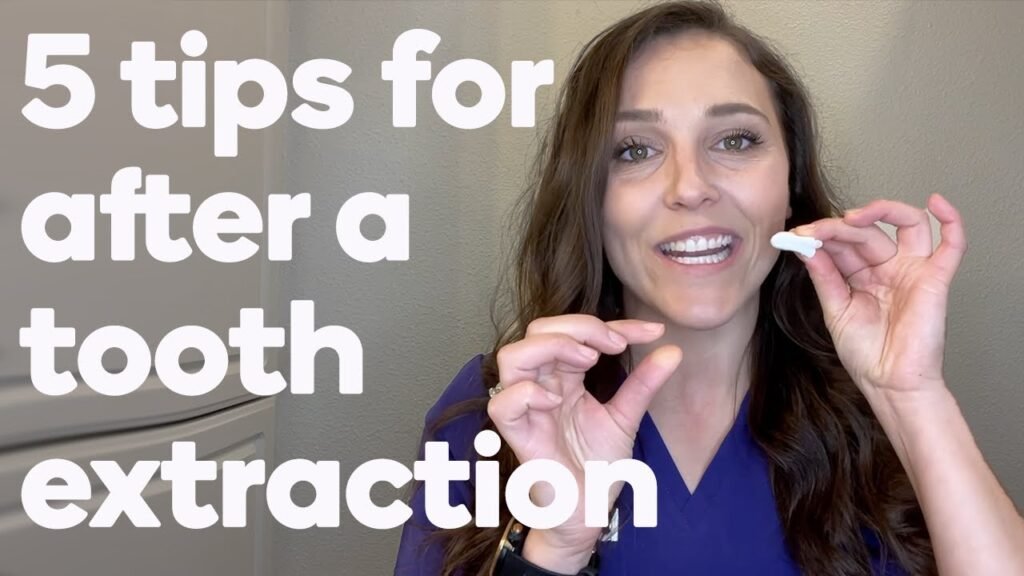After Tooth Extraction: Essential Care Tips

After having a tooth pulled, proper care is crucial to ensure a smooth and speedy recovery. From managing pain and swelling to preventing infection, there are several important steps to follow in order to promote healing and minimize complications. In this article, we will explore the best practices for taking care of your mouth after a tooth extraction, so you can get back to feeling like yourself in no time.
What should and should not be done after tooth extraction?
After a tooth extraction, it is important to follow certain do's and don'ts to ensure proper healing. DO use gauze to control bleeding, rest and elevate your head to reduce swelling, take any prescribed medications as directed, apply ice packs to reduce pain and swelling, and stick to a soft food diet for the first day or two. DON'T smoke, use straws, spit, rinse your mouth vigorously, blow your nose, or touch the extraction site with your tongue as these actions can disrupt the healing process and lead to complications. By following these guidelines, you can promote a smooth and speedy recovery after your tooth extraction.
How long is the recovery time for a tooth extraction?
Recovering from a tooth extraction varies depending on the individual's case, with most people feeling back to normal in just a few days. Despite being able to resume daily activities within 48 to 72 hours, the jawbone typically takes several weeks to fully heal. It is essential to follow post-operative care instructions provided by your dentist to ensure a smooth and speedy recovery process.
When can one cease worrying about dry socket?
You can stop worrying about dry socket once your extraction site is fully healed, which typically takes 7 to 10 days. Dry socket occurs when the blood clot in the socket is dislodged or fails to form, but once the site is fully healed, the risk of dry socket is no longer present. It's important to take proper care of the extraction site during the healing process to minimize the risk of developing dry socket.
Once your extraction site is fully healed, usually within 7 to 10 days, you no longer need to worry about dry socket. This occurs when the blood clot in the socket is dislodged or fails to form, and is a common concern after tooth extraction. By following post-operative care instructions and allowing the site to heal properly, you can minimize the risk of developing dry socket and focus on your recovery.
Post-Extraction Care: A Guide to Healing and Recovery
After a tooth extraction, it is crucial to follow proper post-extraction care to aid in healing and recovery. This includes avoiding vigorous rinsing or spitting for 24 hours, as well as refraining from smoking or drinking through a straw, which can dislodge the blood clot and delay healing. Additionally, applying ice to the affected area and taking prescribed pain medication can help manage discomfort. Following these guidelines will promote a smooth and speedy recovery process, allowing the extraction site to heal properly.
Maximizing Recovery: Essential Tips After Tooth Extraction
After a tooth extraction, it is crucial to follow certain essential tips to maximize recovery and minimize discomfort. Firstly, it is important to follow the dentist's post-operative instructions carefully, including taking any prescribed pain medication and antibiotics as directed. Additionally, it is important to avoid smoking and drinking through a straw, as these activities can disrupt the healing process and increase the risk of complications. It is also recommended to stick to soft foods and liquids for the first few days, gradually reintroducing solid foods as the area heals. Finally, maintaining good oral hygiene by gently brushing and rinsing with a saltwater solution can help prevent infection and promote healing.
In summary, maximizing recovery after a tooth extraction involves following the dentist's instructions, avoiding disruptive activities, sticking to a soft diet, and maintaining good oral hygiene. By taking these essential tips into account, individuals can ensure a smoother and more comfortable recovery process.
In summary, proper care after having a tooth pulled is crucial for a smooth recovery and to prevent any complications. By following the recommended guidelines, such as avoiding vigorous rinsing, sticking to soft foods, and taking prescribed medications, individuals can promote healing and reduce the risk of infection. It is important to closely follow the advice of the dentist or oral surgeon to ensure a comfortable and successful recovery. With the right aftercare, individuals can soon return to their normal activities with a healthy and healed mouth.